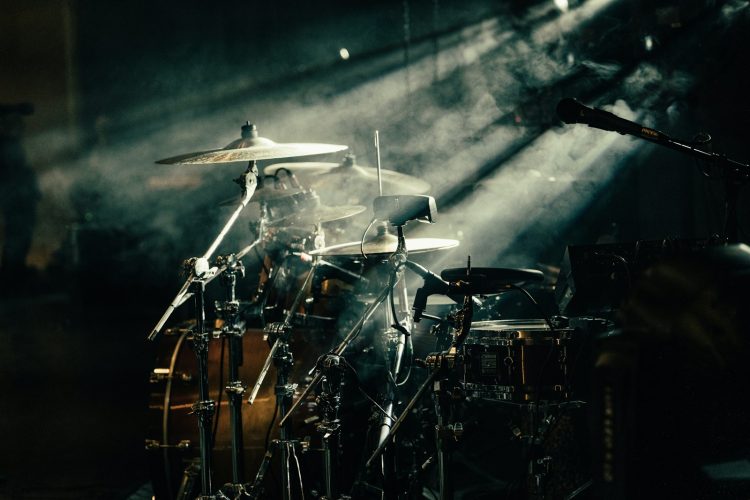Live performance has always been about creating a shared moment between artists and audiences—a space where emotion, story, and spectacle come alive in real time. But behind the magic of those moments lies a continuously evolving craft: staging. From the bare wooden platforms of ancient theaters to today’s hyper-digital environments where light, sound, and motion converge with cutting-edge technology, the evolution of live performance staging tells a parallel story of human creativity, cultural shifts, and technological progress.
In this essay, we’ll journey through the transformation of live performance staging—not simply as a timeline of tools and trends, but as a reflection of the way we see, hear, and experience performance in different eras. This evolution isn’t just about bigger lights or louder speakers—it’s about how the stage has grown to become a storyteller in its own right.
The Origins: Simplicity as Necessity
The earliest forms of staged performances can be traced back thousands of years. Ancient Greek theater used semicircular amphitheaters carved into hillsides, with tiered seating and an open sky. These structures prioritized acoustics and visibility, with minimal set dressing. The focus was on the spoken word, movement, and chorus-driven storytelling. Costumes and masks did the heavy lifting in terms of character identity, and scenery was largely suggested through imagination.
The stage was symbolic and sparse—a reflection of the performance’s function in society. Plays weren’t just entertainment; they were political, religious, and philosophical events. The staging matched this tone: restrained, serious, and intentional. The physical space was a vessel for communal reflection more than visual wonder.
The Renaissance: Enter the Illusion
By the time of the Renaissance, theatrical staging took a significant leap. With the development of proscenium arch stages and indoor theaters—such as those designed by Andrea Palladio—visual storytelling became more prominent. Perspective drawing, borrowed from advances in visual art, was applied to stage design to create illusions of depth and realism.
Scenic backdrops, painted flats, and shifting sets became common. Lighting was still natural—performances timed with daylight—but the illusion of space and place had grown immensely. This period marked the beginning of the stage becoming an immersive canvas, not just a platform.
One cannot overlook the influence of Shakespearean theater during this era. The Globe Theatre featured a thrust stage, bringing actors closer to the audience and enhancing intimacy. While the staging was still minimal by modern standards, props and structural elements like trapdoors and upper balconies introduced dynamic physical storytelling tools.
The Industrial Age: Lights, Machines, Action
With the Industrial Revolution came new possibilities. Gas lighting—and later, electric lighting—transformed staging. Performances could now take place indoors at night, opening the door to mood manipulation, dramatic spotlights, and colored lighting effects. The invention of the limelight (a primitive spotlight) added drama to the stage in ways previously unimaginable.
Mechanized scenery, trapdoors, and revolving stages emerged during the 19th century, especially in opera houses and grand theaters. These innovations allowed for seamless scene changes and the illusion of continuous narrative flow. At the same time, larger audiences demanded grander spectacle. Set pieces became more elaborate, and the stage grew in physical size and complexity.
Opera and ballet led the charge in this era, blending musical, visual, and dramatic elements into singular events. Staging became a collaborative art between directors, designers, and technicians—an early version of what we now consider modern production teams.
The 20th Century: A Stage for Every Story
The 20th century saw an explosion of diversity in performance staging. The stage was no longer a fixed concept—it was a variable, molded to the needs of the performance itself. With the rise of realism in theater, minimalist staging came into vogue. Directors like Konstantin Stanislavski and later, practitioners of the “black box” theater movement, advocated for intimate, flexible spaces that emphasized naturalism and emotional authenticity.
On the flip side, musical theater, particularly on Broadway, pushed staging into spectacle territory. Productions like West Side Story and The Phantom of the Opera showcased enormous sets, choreographed scene changes, and integrated music, light, and movement in tightly controlled productions. Staging wasn’t just functional—it was essential to the storytelling.
Meanwhile, advancements in audio technology meant that performers no longer had to rely on projection alone. Microphones and amplification brought a new level of nuance to vocal performance, allowing stages to grow while keeping emotional immediacy intact.
The Digital Turn: From Physical to Virtual
The late 20th and early 21st centuries introduced digital technology into staging. The use of video projections, programmable lighting rigs, and computer-controlled set movement became standard in major productions. The introduction of LED walls, intelligent lighting, and motion tracking allowed for precise, reactive staging that could evolve in real time with the performance.
Cirque du Soleil became a benchmark for modern staging innovation—melding acrobatics, live music, digital art, and environmental storytelling into immersive experiences. Similarly, pop stars like Beyoncé and Kanye West began using concert staging that mirrored theatrical design, complete with cinematic visuals, narrative arcs, and cutting-edge tech.
The stage was no longer bound by physical constraints. Holograms allowed for digital resurrection of artists. Projections created infinite, shifting backdrops. Lighting rigs could simulate time of day, emotional beats, or abstract ideas. The line between theater, concert, and visual art began to blur.
Immersive Experiences and Interactive Staging
More recently, the audience’s role has shifted from passive observer to active participant. Immersive theater companies like Punchdrunk and Meow Wolf have challenged the traditional stage-audience divide by creating performance environments where audiences can roam, interact, and even shape the narrative.
In these settings, staging is not linear but environmental. Every corner of the venue becomes part of the performance. Light, sound, texture, and even scent are used to build atmosphere and engagement. These performances often run without a conventional “stage” at all—relying instead on architecture, timing, and spatial dynamics to guide the audience through the experience.
Concerts, too, have begun incorporating immersive elements. From AR-enhanced mobile apps that interact with live shows to 360-degree stages that surround the audience, the performance environment is increasingly designed to be experienced from all angles.
Post-Pandemic Innovation and Virtual Staging
The COVID-19 pandemic forced the live performance industry to reinvent itself. With venues shuttered, artists and producers turned to livestreams, virtual reality, and hybrid events to reach their audiences. While nothing can replace the energy of a live crowd, this pivot sparked new ideas for what staging could be.
In virtual performances, staging became a digital landscape. Artists could perform in CGI environments, on green screens, or in augmented reality spaces that only existed through a screen. Platforms like Fortnite and Roblox hosted virtual concerts with millions of viewers, where staging became a visual spectacle untethered by gravity or physics.
These developments showed that performance staging could extend into the digital world—not just as a substitute for live shows, but as a legitimate new frontier.
The Present and Future: A Synthesis of Art and Engineering
Live performance staging today is a convergence of art, technology, and audience psychology. It’s driven by a desire to create connection—whether that’s through immersive intimacy or explosive spectacle. The tools are more powerful than ever: robotics, 3D mapping, AI-driven lighting, and modular stages that can shift form mid-show.
The future points toward even more integration between the performer, the stage, and the audience. Real-time data could allow shows to adapt based on crowd energy or emotion. Interactive wearables may make audience members part of the light show. Sustainable staging solutions—like recyclable sets, green power, and minimal waste designs—are also gaining momentum.
Most importantly, the evolution of staging mirrors our evolving sense of story and presence. The stage is no longer just where the action happens—it’s part of the narrative. It’s as alive as the performance itself.





